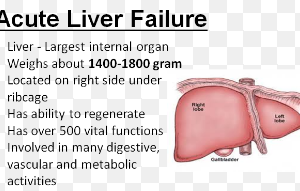The 5-year survival rate for esophageal cancer is alarmingly low.
It’s essentially a death sentence. Just HOW does esophageal cancer cause death?
The 10-year survival rate of this cruel disease is virtually zero, says Alex Little, MD, a thoracic surgeon with a special interest in esophageal and lung cancer.
That’s because almost always, it’s discovered after it’s already spread.
Furthermore, esophageal cancer grows and spreads quickly.
There is a YouTube video of a woman, 34, describing her esophageal cancer symptoms. She looks healthy.
But five months after the video was made, she died from this disease.
A month before she passed from esophageal cancer, she made another video from a hospital bed.
Her skin was rather ashen, and her face looked older and sunken. She had been hospitalized for gastric distress and fluid buildup in her abdomen.
And about a month later, she was dead.
Death has terrified mankind since the beginning of time.
We’ve always wondered just how it “feels” to die.
Many often wonder exactly what happens in the body that makes it die.
When someone gets shot in the heart or drowns, this is easy to understand.
But death from esophageal or other cancers is not a quick, shot-in-the-heart type of dying.
Death by Esophageal Cancer: What Happens
Esophageal cancer eventually spreads, and this leads to death – which follows a progressing deterioration which eventually quickens – but exactly how?
Dr. Little explains, “In earlier days malnutrition due to starvation [tumor blocking food going down] played important roles.
“This is rarely the case now, as patients can eat because of an operation, a stent or because chemotherapy and/or radiation have shrunk the tumor.
“Now, it is the effect of metastatic disease shutting down other organs such as the liver and brain by direct involvement and also diverting essential nutrition to feeding the metastases.”
When the liver fails, the kidneys follow suit, because the kidneys depend on a healthy liver.
As the liver shuts down in end stage disease, this causes a chain reaction that results in constriction of the kidneys’ blood vessels, stripping the kidneys of their life-giving blood supply. The patient is now in acute kidney failure.
Kidney dialysis won’t save the patient because the liver would continue to be in end stage due to cancer metastases.
It’s also possible for the spread to be in the kidneys as well.
The brainstem controls vital bodily functions, so if there is cancer invasion of the brainstem, it’s easy to understand how this plays a role in terminal illness.
If the patient is receiving nutrition through a tube, much of that nutrition is going to the greedy metastases, fueling their systemic invasion, creating a vicious cycle that eventually culminates in multi-organ shutdown.
Ultimately, a last, and weak, breath is drawn.
Here is the link to the video in which a young woman describes her esophageal cancer symptoms.
 Alex Little, MD, trained in general and thoracic surgery at the Johns Hopkins University School of Medicine; has been active in national thoracic surgical societies as a speaker and participant, and served as president of the American College of Chest Physicians. He’s the author of “Cracking Chests: How Thoracic Surgery Got from Rocks to Sticks,” available on Amazon.
Alex Little, MD, trained in general and thoracic surgery at the Johns Hopkins University School of Medicine; has been active in national thoracic surgical societies as a speaker and participant, and served as president of the American College of Chest Physicians. He’s the author of “Cracking Chests: How Thoracic Surgery Got from Rocks to Sticks,” available on Amazon.
 Lorra Garrick has been covering medical, fitness and cybersecurity topics for many years, having written thousands of articles for print magazines and websites, including as a ghostwriter. She’s also a former ACE-certified personal trainer.
Lorra Garrick has been covering medical, fitness and cybersecurity topics for many years, having written thousands of articles for print magazines and websites, including as a ghostwriter. She’s also a former ACE-certified personal trainer.
.










































